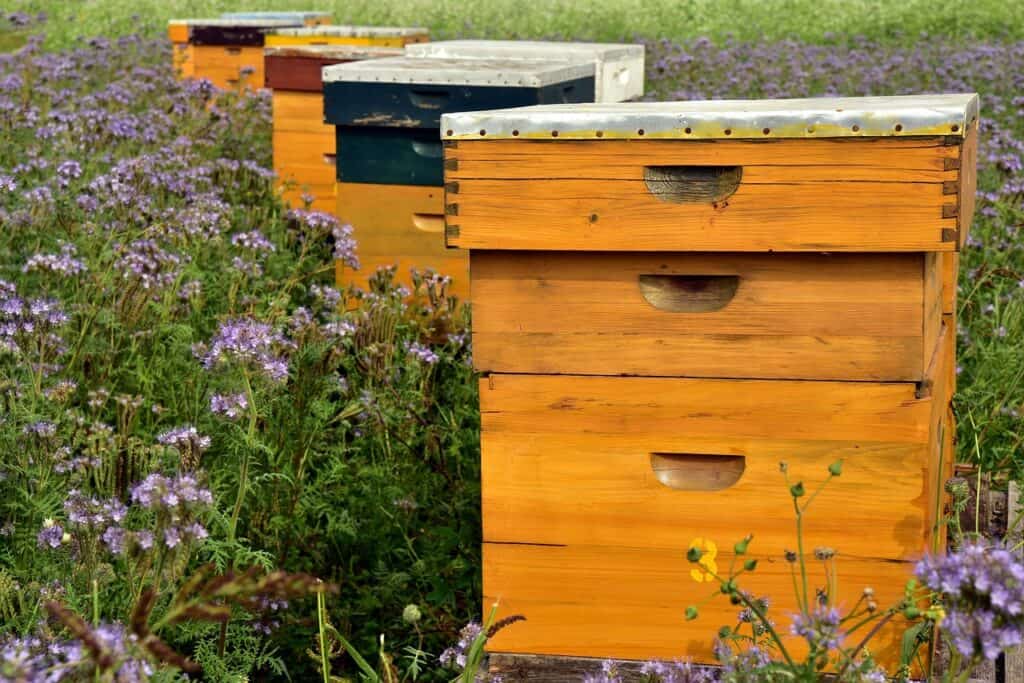
American beekeepers and honey producers continued to lose hundreds of thousands of bee colonies each quarter in 2023, according to an annual survey released Thursday by the U.S. Department of Agriculture.
From January through March, respondents to the federal survey reported that they lost nearly 400,000 colonies in a single quarter. That number constitutes 15 percent of the estimated 2.7 million honey bee colonies in the United States. During the rest of the year, respondents reported that they lost between 250,000 and 380,000 colonies each quarter.
“It’s so hard to keep them alive,” said Chris Hiatt, president of the American Honey Producers Association. “We just expect we’re going to lose 40 to 50 percent.”
Despite the substantial losses, the estimated number of honey bee colonies remained stable from 2022 to 2023, with the total number of colonies estimated at 2.71 million. The totals have remained the same because beekeepers added or renovated colonies throughout the year.
Hiatt said that because demand for pollination is increasing, the number of hives should have increased as well, but that beekeeping operations are struggling to maintain the hives they have.
“Financially, everyone should have increased their hive numbers by 10 to 20 percent,” he said. “Hive numbers should go up.”
On the positive side, the reports of symptoms of colony collapse disorder (CCD) decreased in the first quarter of 2024. Last year, in the first quarter, that number spiked at more than 107,000 colonies. In the first quarter of 2024, by comparison, that number fell to 70,650.
The disorder is characterized, in part, by the rapid loss of the adult bee population even if the colony has a queen. To qualify as colony collapse disorder, the loss of bees cannot be explained by the presence of mites or fungus.
The dramatic onset of CCD in recent decades spurred headlines and public awareness about the risks to honey bees.
For the annual honey bee colony survey, the National Agricultural Statistical Service surveyed 3,300 beekeeping operations that managed five or more colonies on a quarterly basis. The agency did not release data on sampling error.
In a separate report issued by the Bee Informed Partnership, a now-defunct nonprofit organization, beekeepers reported that they lost 50 percent of their colonies over the course of an entire year from April 2022 to April 2023. The 12-year loss rate reported by the organization, which surveyed more than 10 percent of beekeepers nationwide, was 40 percent.
In the USDA survey, during January through June – the hardest months for colonies – leading stressors included Varroa mites, with beekeepers reporting between 40 and 50 percent of colonies affected by the insects; followed by other pests, at about 14 percent. They reported that pesticides qualified as stressors in about 10 percent of colonies.
That means that during those months, Varroa mites and other pests may have affected as many as 1.7 million colonies, and pesticides may have affected 270,000 colonies, according to respondents.
Beekeepers also reported that they lost nearly 14 percent of colonies during those months because of other factors, such as weather, starvation, insufficient forage, queen death and hive damage.
The numbers from the USDA showed a flurry of activity to keep bee operations going, with operators adding hundreds of thousands of colonies: 404,000 in the first quarter of 2023, followed by 617,000 in the second quarter, 618,000 in the third quarter and 119,000 in the fourth quarter.
On top of that, operators renovated colonies. In those cases, they added a queen or additional bees to an existing colony. Beekeepers reported renovating 216,000 colonies in the first quarter, 522,000 colonies in the second quarter, 486,000 colonies in the third quarter and 119,000 in the fourth quarter.
The process is costly, Hiatt said, with “an incredible amount of expensive queens, and you’re taking away from your strong hives. Luckily, with bees, within a season, you can have a strong hive.”
The survey’s estimate of 2.7 million colonies in the United States differs substantially from the estimate produced by a separate USDA survey, a five-year agricultural census. In that report, the agency estimated that the U.S. had 3.8 million bee colonies, a record number.
The two federal surveys polled different populations. For the one-year survey, operations with fewer than five colonies were excluded. For the five-year survey, responses came from all farm operations with known bee colonies.
Earlier this year, honey producers and bee health advocates questioned the estimate from the five-year agricultural census because of the low response rate to the survey; only 61 percent of all farm managers and producers responded.
The stakes in getting good numbers on bee health couldn’t be higher, Hiatt said.
“It’s a national food security issue.”









